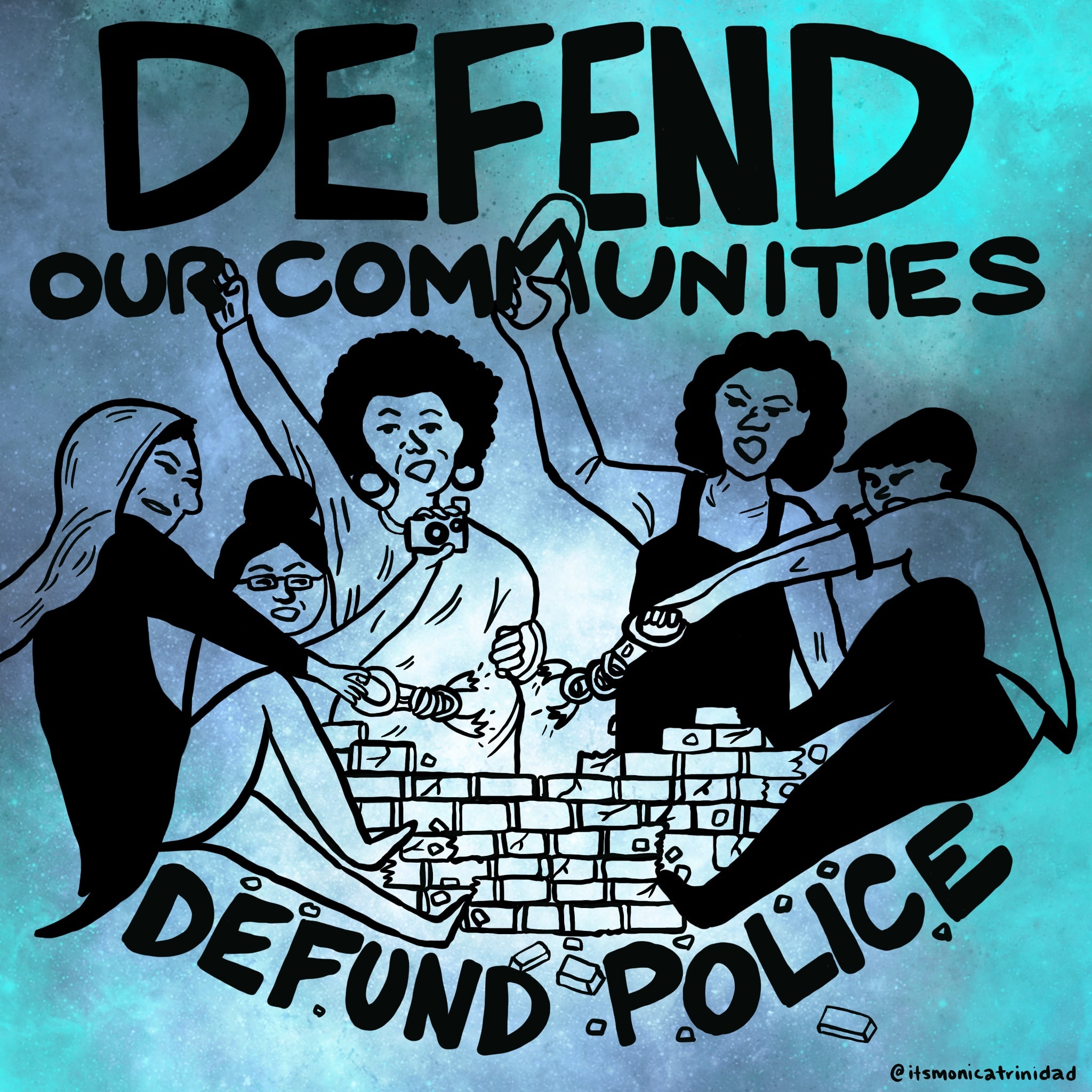Amid an unprecedented mainstream debate over disarming and disbanding police, leading abolitionists published a tool guide to conceptually clarify the struggle to upend law enforcement systems, while also mapping strategies and tactics for local organizers.
#DefundPolice is one strategy towards abolition, as activist and scholar Mariame Kaba, writer and lawyer Andrea J. Ritchie, and TGI Justice Project‘s Woods Ervin explain in a June 15 toolkit created in tandem with the Movement 4 Black Lives and Interrupting Criminalization: Research in Action. According to the document embedded below, it advances “a long term vision of abolition of police through divestment from policing as a practice, dismantling policing institutions, and building community-based responses to harm, need, and conflict that do not rely on surveillance, policing and punishment.”
As politicians and news media muddle what exactly abolition is and isn’t, the authors draw crucial distinctions. City councils that are actually considering defunding the police may not in fact be meaningfully working to constrain or end their power. The authors describe three types: mere “budget cuts,” which fail to limit police size and scope, contest their legitimacy, or reinvest in criminalized communities subjected to austerity; a #DefundPolice approach, overhauling power and committing to investing in communities; and “dismantling” by cutting police funding with no intention of replacing it with another law enforcement body, while re-imagining systems of accountability and transformation of harm.
Then, there is abolition, a project of eliminating systems of police, surveillance and punishment, while investing in programs for the “universal public good” and societal structures that promote “mutual accountability” and “collective liberation,” the authors describe.
Actualizing a given ideological vision requires a cogent strategy. Targets to consider that continue to feed law enforcement agencies, the authors suggest, include city and county budgets, state funds, federal grants, fines and fees, asset forfeiture, private-public contracts and corporate donations. The authors propose 10 demands towards the goal of abolition, like committing to reduce budgets until zero, disappearing police from public institutions likes schools, and refusing police-like responsibilities adopted by social service agencies, among others.
The authors issue some cautions: “Avoid getting lost in exact dollar numbers and don’t simply mandate police to have private liability insurance.” They encourage organizers, among other things, to beware of things like “Watered Down Translations” of abolition or the “Failure to Build Capacity” within communities.
The toolkit is a starting place, but not the final roadmap, the authors acknowledge. “We need a million experiments,” tweeted Kaba. “A bunch will fail. That’s good because we’ll have learned a lot that we can apply to the next ones.”





Show Comments